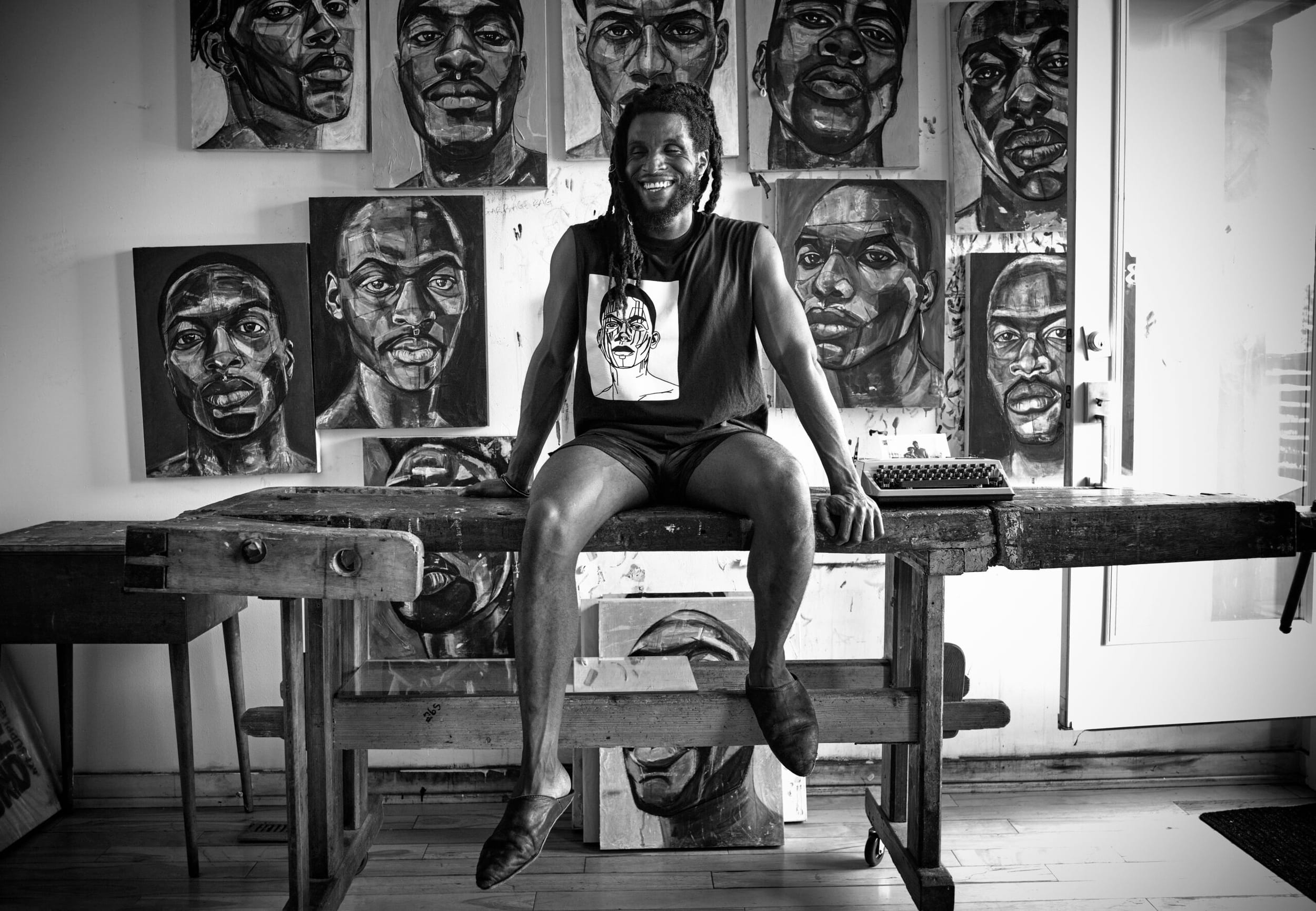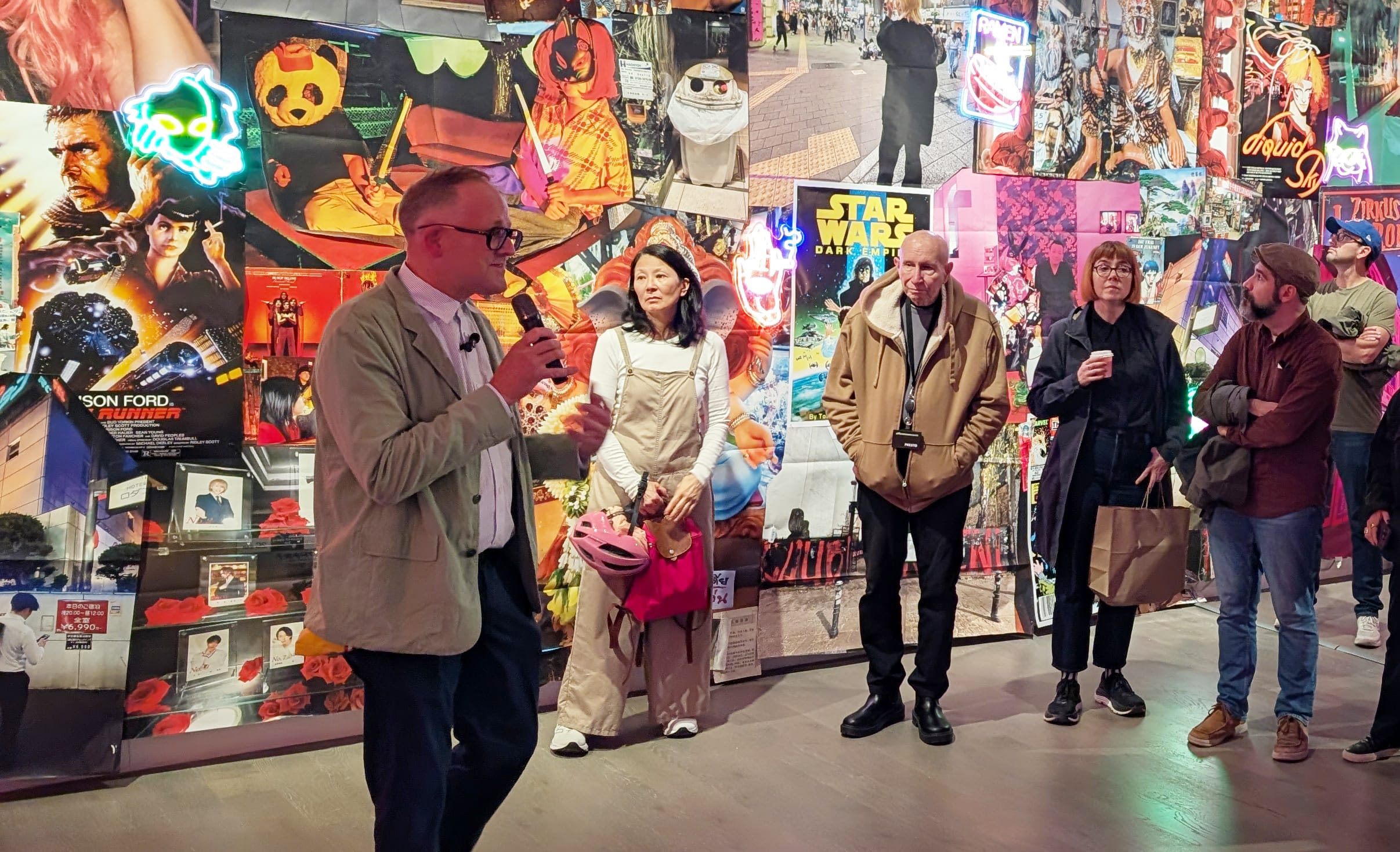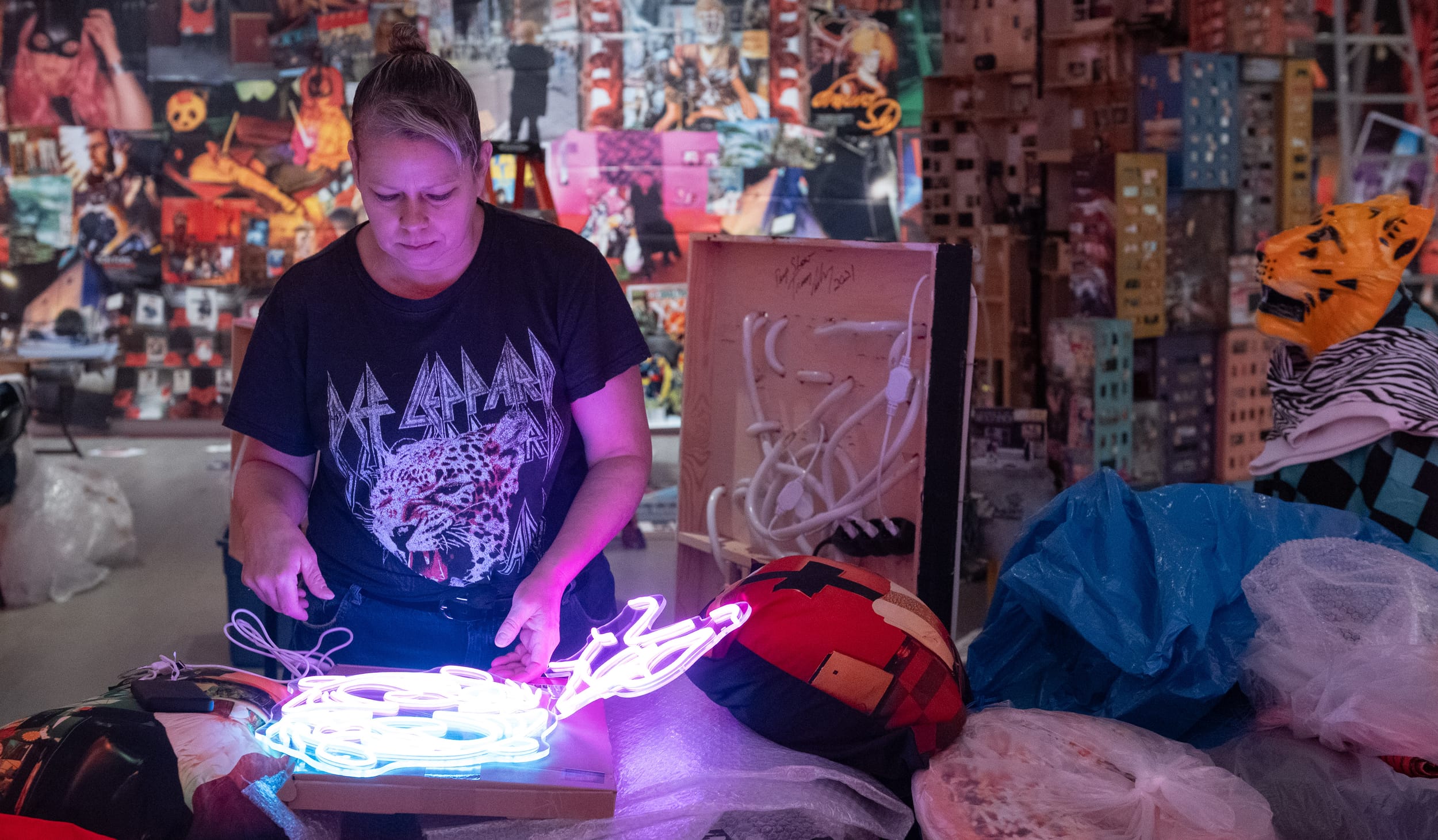Surviving the Journey and the Shaping of Identity in Jewish Storytelling
Authors Gary Barwin and Cary Fagan discuss the quest as narrative device in their work, and how journey stories can help children—and even writers—navigate difficult or traumatic subject matter.

As part of programming around the 2023 Vine Awards for Canadian Jewish Literature, on September 10th the Koffler Centre presented the panel “Going Deeper: Journey and Identity in Jewish Storytelling” featuring two of this year’s shortlisted authors—Gary Barwin, for his novel Nothing the Same, Everything Haunted: The Ballad of Motl the Cowboy in the fiction category, and Cary Fagan, whose Water, Water is nominated for young adult/children’s. (Fagan would go on to win.) The panel was hosted by the Holy Blossom Temple in Toronto, and moderated by Sidura Ludwig, whose short story collection You Are Not What We Expected won the 2021 Vine Award for fiction.
Winners of the 2023 Vine Awards were announced on October 12 at a ceremony in Toronto. (See the complete list of the winners.)
The text of the panel discussion has been edited for clarity and length.
*
SIDURA LUDWIG: I’d like to start our discussion by asking both of you what inspired your books—and why choose to tell a journey story?
CARY FAGAN: It’s a little different than my previous kids’ books because Water was born out of fear. It was born out of the fear that I have for the future, particularly the fear that I have for our kids, and what’s happening to our planet. It occurred to me that kids know everything now, and they must be full of fear too. I can't write a book that's going to have any effect on solving the problem, but maybe I could write something that could, at least, be a bit of catharsis if you read it.
I think I needed it. And I thought maybe young readers would need it. So that was part of it, my fear of climate change and our future. The second thing was to tell a good story, which I always want to do. I love survival stories. Robinson Crusoe is still one of my favourite books.
This story is about a boy, Rafe, who has to figure out why he’s floating in the middle of the ocean in his room. Where’s food going to come from? Are there other people alive? What’s going to happen? I loved immersing myself in that story, and I hope that combining my fear with my love of narrative produces something pleasurable, and temporarily relieves some stress the reader might be feeling.
GARY BARWIN: For me there are two origins. One is my family. My grandparents were from Lithuania, and they emigrated to South Africa in the ’20s and early ’30s. Then my parents moved from South Africa to Northern Ireland when they got married. They didn’t want to be in South Africa. I grew up in Northern Ireland, and then the Troubles began, and we moved to Canada. I’ve been thinking about identity and travel and what you bring with you, and how you maintain that.
When my grandfather left Lithuania, he’d been looking for my cousin. As a small boy, when the Nazis came in 1941, his father told him you walk that way towards Russia. He was what, eight or nine? And he walked. There was a retreating Russian troop transport that said, “We have room for one boy.” They took the little boy up, and he went to safety. I’m always thinking about him. He literally walked himself out of the Holocaust and was saved.
My grandfather found him again 30 years later in Chicago. I was thinking about that story and thinking about the Holocaust in Lithuania, and that particular story is very different from what happened in Poland and other places. I think so much of Jewish history has been about diaspora, about a sense of moving from one place to another, and thinking back to other places.
The other thing the book is based on is cowboy stories. I became fascinated by the writing of Karl May, who was a German writer of Westerns and the most popular German writer of the 20th century. He wrote these Westerns that used the trope of the noble savage, the Indigenous person. They were so popular, and I was thinking about that, but also the idea that Hitler was fascinated by this idealized form of Indigenous people, and this notion of the West, about how Hitler had borrowed ideas from colonialism.
I wanted to model my book after a Western, and Westerns often have a quest. They’re searching for something. The characters go out into the wild lands on a quest looking for something, and they find something about themselves.
LUDWIG: In each of these books, there’s an arduous physical journey. We have Rafe, who finds himself in the sea of water. We have Motl, who comes across all different kinds of challenges along the way. But there’s also an individual emotional journey, perhaps even a quieter one, that each character faces. Can we talk about how the one framework feeds the other in your story?
FAGAN: In my book, there’s a physical journey of floating in the ocean—of discovering what’s out there and if any future is possible. For the character Rafe there’s a question of “how do you remain human under such conditions?” I don’t think it’s explicit, but he has to think about how to survive in some kind of meaningful way. That happens through the person he meets and eventually through a larger community that does survive. It’s really through people. The physical journey has to bring him back to the human world somehow.
LUDWIG: Gary, what about you? Talk about the physical and emotional journey in your book.
BARWIN: People sometimes undergo a journey to find a part of themselves. Motl is trying to find a part of himself. His testicles were shot off twenty years before. They fell into a glacier where they froze. So now he’s crossing Europe in the middle of World War II to find his testicles, and then hopefully, that’s where he’s going to procreate, create new life, and find a part of himself.
In his case, he’s thinking about being a man. He’s also imagining being a cowboy. He wants to be this sort of Clint Eastwood, tough, laconic, macho guy, and he’s not. He’s middle-aged, a bit of a nebbish. He finds that he has strength not in being the tough, macho leather-faced cowboy, but in being a different kind of man and supporter.
He also finds that emotional journey for himself. In the end, he ends up in Toronto. All of that journey and inventing a life, how do you live after the Holocaust? That’s part of the other second part of the book is that journey of how he finds himself. And how he reconciles all the things, losses and gains he’s had. Physically, as well as emotionally.
LUDWIG: Trauma infuses both of these books. We’ve got World War II Europe and the Holocaust, and the implication that the flood is related to climate change. What I found when I was reading both of them is that the adventure component of each of these stories helps to shift the reader’s emotional focus away from the trauma, away from the horror, and instead centers us on the character’s agency. In both cases, we have main characters with a lot of autonomy and agency. Can you speak to the effect that writing a journey story helped you to navigate difficult subject matter?
BARWIN: It’s a lot about agency, and I think the whole story is about my character finding agency and what that looks like. There’s lots of humour in the book, and part of that is by my character taking agency, being able to think of things humorously, being the center of his own story, and be telling the story, that’s taking agency. It’s his story, even if it’s traumatic. It’s his story for him to claim and to work through.
Despite the horrors, there are these remarkable stories and adventures of escape, of ingenuity, of love, of loss, that’s built into war, built into the Holocaust. I’ve heard many really remarkable stories from survivors, stories that seem almost like fables, whether they’re really dark or not dark, or tragic or not tragic… I mean, I should say they’re all dark, even within the humour. So there’s a propulsion of this, “I need to get out of here, I need to move through my life, I need to somehow survive.” And that’s a narrative, right?
LUDWIG: I think there’s also something to, you know, when we’re writing historical fiction we already know the ending. So there is some relief, even as horrific and traumatic as the story is. We know, in a sense, the general ending—that as Jewish people we have survived and thrived, even through the trauma.
BARWIN: But then, what does that look like? And that’s an interesting thing. Another story I like to tell that I adapted for the book, is that there’s a video of a survivor standing in front of the gates of Auschwitz with his daughter and his grandchildren, and they’re dancing at the gates to Gloria Gaynor’s “I Will Survive”. It’s this amazing thing… you know the story of him, he survived, that’s his own personal expression of survival. So, yes, we know the story, but how do we tell it and what’s our responsibility, not only to witness, but also to witness the witnesses, the people who have remembered.
LUDWIG: I’m so glad we have both of you on this panel, because we’ve got one [book] that’s historical fiction and one that feels scarily present day.
FAGAN: One of the ironies of the novel, and this really applies to Gary’s book and mine both, is that no matter how serious a subject matter is, I think novels are supposed to provide pleasure in some way. And pleasure is a very complicated thing.
For me, particularly, it’s about writing for kids. I get asked a lot because I write novels for adults, I get asked a lot, “What's the difference?” I used to always say, “There’s not any difference.” It’s all writing, you try to write your best story, create characters. I realized at some point that I was lying a little bit, that there is a difference between writing for kids and adults, and one of them is you need to respect your audience of kids, and where they are in becoming human beings.
You would not show a horror movie to a five-year-old. It would traumatize them. They cannot absorb and make sense of it. In the same way, you have to be respectful of how developed your audience is. It’s not censorship, it’s something else. I’m very keenly aware that, when I write, I always think I have one eye looking in, and one eye looking out at my imagined audience.
I need to be satisfying my own needs as a writer, but I also am very keenly conscious of the needs of the reader. Rafe actually realizes that his parents are gone, and everybody he knows is gone, but how do you deal with that in a way that a kid can cope with? Part of the answer for the book is that Rafe has to put those emotions off just to survive, and then at the end you can see that he will have a chance to process it eventually.
BARWIN: I’ve been thinking about my cousin Isaac, the one who walked away from Vilnius. When he came back it was after the war, he was 14, he ended up in the Ural Mountains. I was interviewing him for the book and I asked him, what was he thinking when he came back and everybody he knew was dead, all his family. And he said it was great. “I had no one to tell me what to do.”
I kept asking, “No, but surely you must’ve felt, like, trauma?” I think exactly what you’re saying is that, first of all, he’s at a different stage. He was a kid. He didn’t have the maturity even to begin to process this horror, but also I think he put it off. Because how could he possibly imagine his world had gone? So instead he went to follow another kind of a thing, this kind of adventure. I think he spent the rest of his life thinking about it, but not at that moment.
FAGAN: That reminds me of my dad, because my dad grew up in Brussels and the Nazis invaded when he was 14, and his family fled, and they were basically fleeing for about two years, down south of France and Portugal, and he ended up in a refugee camp in Jamaica. And it was something of an adventure for my father, but it was also my dad’s upbeat personality. I think it’s partly who you are. I think other people would treat it differently. My mom was born in Toronto, she was born on Nassau Street in Kensington Market. And she’s a much more pessimistic person than my dad was. God bless them all. It’s just, they’re really very different people. And I think some of it comes from innate nature.





